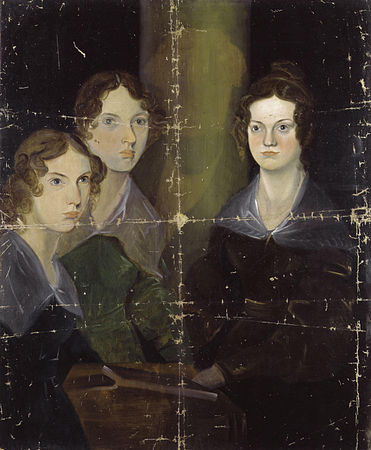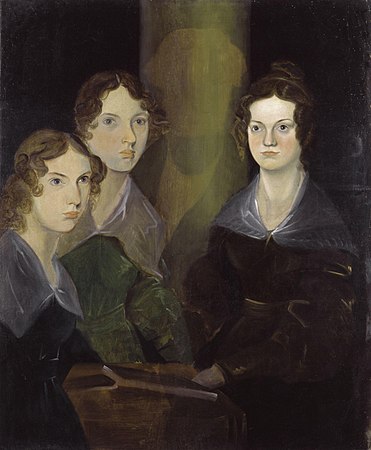Commons:Why we need high resolution media
Often contributors and persons licensing media ask, "Why does Wikimedia Commons need high resolution media? Isn't web resolution media sufficient for use on Wikipedia?" While web resolution media is certainly better than no media, high resolution media serves a variety of valuable purposes to the project, and this is why we strive to always obtain the highest resolution version possible.
Print versions[edit]
 |
.jpg/100px-Self-portrait_with_Felt_Hat_by_Vincent_van_Gogh_(detail_of_eye).jpg) |
Typical computer monitors and mobile displays today have between 100 and 200 pixels per inch (dpi). Because of this, many images when rendered on a computer monitor experience either a loss of detail, artifacts, or both. For comparison, even a low-quality inkjet printer prints images at 300 dpi, or 9 times as many pixels per square inch; and typical laser printers print at 600 to 1200 dpi, about 100 times as many pixels per square inch. In professional print publications, web-resolution images, designed for display on computer monitors, are considered unacceptable unless no alternative is available. One of our project goals is to create professional-quality print versions of Wikipedia articles, which can be printed and sold or distributed to people without access to computers, and this requires higher resolution media.
For an example of this, go to en:Ellen Terry, click "Print/export" on the left-hand sidebar, and then click "Download as PDF". Open the PDF in Adobe Acrobat, scroll down to the painting Choosing by George Frederic Watts, and zoom in on it. Considerably more detail is visible in this printable document than on the web page, resulting in noticeably higher quality in a printout.
Super-high resolution displays[edit]
Over the last ten years, technology manufacturers introduced displays with higher and higher pixel density, such as Apple's Retina Displays (up to about 476 dpi, now expanded to their whole lineup), Google's Nexus devices (already up to 445 dpi on the Nexus 5), and Samsung's ATIV Book 9 Plus, a 3200x1800, 13 inch laptop. MediaWiki has already begun serving 1.5x and 2x images to these devices[1], and there is no doubt that even larger images will need to be served in the future, particularly when displaying images full-screen. With high-resolution media, images on these displays appear sharp and crisp like prints in a magazine, instead of pixellated and blurry.
Extracted images[edit]
Often, a high-resolution image can be cropped to focus on a portion of the image, effectively generating a new image with a different purpose. The most triumphant example of this on Commons is File:The Anti-Slavery Society Convention, 1840 by Benjamin Robert Haydon.jpg (shown right), a detailed painting of the 1840 Anti-Slavery Society Convention, a historic event that many important historical figures attended. No fewer than 35 portraits have been cropped from this image, many of persons who have no other image on Commons. If the original image were web resolution, these cropped versions would be so tiny (about 20 by 20 pixels) that the persons in them would be unidentifiable. Despite the high resolution of the source image, many of the extracted images only manage to reach low web resolution, suggesting that in fact an even higher resolution image would be useful. The same applies to group photographs.
A similar source of many images is File:Pieter Brueghel the Elder - The Dutch Proverbs - Google Art Project.jpg, with over 120 extracted images illustrating individual proverbs. Before the 23 megapixel version of this image was made available, these extracted images were so low-resolution (about 80×80 pixels) as to be useless.
Wikipedia has many articles on individual paintings; such articles may highlight particular portions of an image (sometimes subtle ones) to explain how they contribute to the overall allegory or motif, to demonstrate authenticity, or even to explain the art style, such as brush strokes. Another common example is artists' signatures that are extracted from their works. In art scholarship such extracted images are called details and are frequently included in the literature.
Extracted frames[edit]
Similarly, high-resolution videos are useful because individual frames of the video can be extracted and used as high-resolution images – images that will look good in print and allow smaller images to be extracted. Commons currently has a limitation of upload size that makes high-resolution video difficult to upload, but such videos are a promising source of educational derivative works.
Identification[edit]
.jpg/300px-Aerial_view_of_five_Parkmerced_apartment_buildings_(detail_of_banner).jpg)
In a typical museum or botanical garden, all artifacts are carefully labelled with all known information regarding them, but the larger world is not so kind. Correctly identifying the artist or manufacturer behind an artifact often requires the ability to examine minute details, such as reading tiny signatures or identifying a characteristic type of material or brush stroke. Distinguishing a fraudulent copy or print from an original is particularly challenging. Similarly, identifying plants, animals, or insects often requires careful examination of fine details like the pattern of veins or the serration of leaf edges.
High-resolution aerial photos allow some banners and signs to be read. Identifying precisely what an image depicts can make the difference between a useless and a useful image.
Educational details[edit]

Many images, especially complex ones, contain small details that are of educational value to persons interested in the relevant topic area – some of these cannot be anticipated by us. For example The Garden of Earthly Delights (shown right) is an intricate symbolic work that may require hours of detailed examination to fully appreciate. For a work like this, no number of extracted images in the Wikipedia article is a substitute for downloading and examining the work in detail as a whole.
This also applies to photographs: for example, a high-res photo of a computer motherboard allows small textual labels to be read and connections to be traced, while a low-res image provides very little insight into how the device functions.
Restoration[edit]
High-resolution images are easier to digitally restore. Dust, dirt, and scratches that are clearly visible – and easy to remove – in a high-resolution image will instead result in local discoloration or artifacts in a web-resolution image, which require more advanced techniques and more speculation to remove. Such artifacts are difficult to distinguish from an intentional part of the original work. Additionally, since restoration represents a time investment on the part of the restorer, they want to be sure the product of their work will be as useful as possible for the purposes described above, and not have to do it all over again when a higher-resolution version is found.
-
The Brontë Sisters, original version – damaged by poor storage
-
Restored version
See also[edit]
- How the Rijksmuseum opened up its collection, archived on 11 August 2015:
- Commons:Lossy and lossless compression
- Commons:File types#Highest resolution





